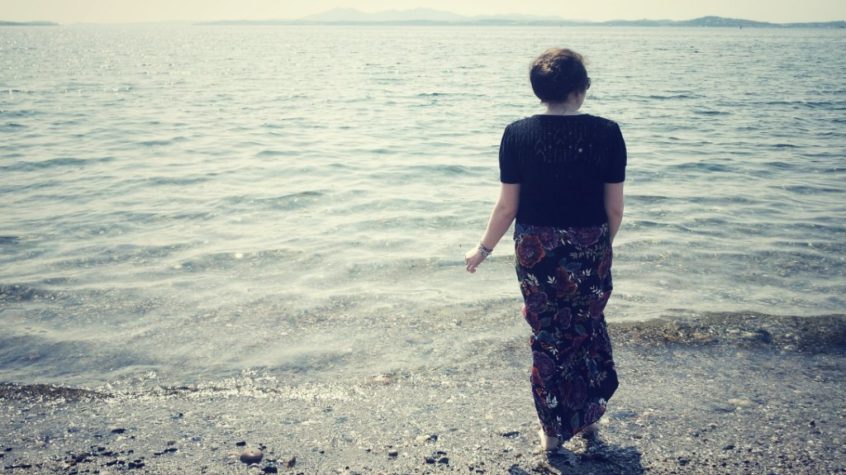My sister is a mermaid. Really, it’s the only explanation. On land, her clumsiness is surpassed only by that of her younger sibling; if I miss a solitary coffee mug, sitting innocently in the middle of the room, she’ll kick it over the carpet in my stead. But drop her in a pool, loch or puddle and (while she might be a bit irritated) she’ll glide gracefully to the surface, with nary a splutter or a flail.
Okay, that’s probably the point at which the analogy splashes to a halt. There are no scales, no friendly flatfish, and I don’t know if she even owns a seashell comb, but my drift is surely catch-able. And while big sis is part maid, part mer, my non-human half appears to be a handy mix of sand and cement. So really it’s no surprise that I readily sink like a Hobnob dunked in a tea cup.
My swimming journey has been a convoluted one: geographically as much as emotionally. Ruled by aquaphobia for longer than I can remember, I finally braved a couple of group lessons earlier this year in a high school pool in Glasgow. Like every good aquaphobe, I spent the longest stretch of each session struggling to keep my thumping heart and knocking knees from causing a small tidal wave. Trying to assimilate information while my senses flooded with terror wasn’t easy but I persevered and eventually started to find my fins, even managing to float a little, as long as my clenched fingers were still safely attached to the poolside. But the laughter stopped when a handful of ten year-olds who had already surpassed my paltry efforts were admitted to the class. Shame and splashing, it turns out, are not conducive to learning.
Luckily, it was around then that I heard from Sam from Inner Swimmer. Based in Manchester, Sam specialises in teaching adults with aquaphobia to swim, using methods that address the fear and build the techniques before even engaging with the water. During my three-day stay in Lancashire, I found myself learning how I breathe and move my body, seeking salt-water support in Sam’s wonderful float-room and, incredibly, sitting (almost comfortably) on the bottom of a swimming pool for the first time ever.
You see, for someone with such a fear of water, learning to swim isn’t just about the skills; it’s also about being able to trust that, while expanses of water are dangerous, respect – and not fear – is all that is needed when faced with its might. And Sam, through years of experience, has devised a unique training program of Move, Float and Swim lessons to help sufferers understand their phobia, learn to cope with its symptoms and ultimately coax out the swimmer that, she assures me, is inside all of us.
I gained so much from those few lessons with someone who understood the debilitating effects of a phobia on the learning process and was willing to take the time to tackle my watery demons before throwing me in beside them. Am I still frightened of the water? Oh God, yes. Do I now have the coping strategies and faith in myself to overcome the nerves and learn to swim calmly and safely? You know what, I think I do.
So I’ve been taking one-to-one swimming lessons over the past fortnight in a local Glasgow Club centre and, with my new instructor, Billy, I’ve already seen so much progress in my water-work (it’s still not quite passable as ‘swimming’ yet). I’m spending much more time in the pool now, even going outwith my lessons, and I’ve visited the Scottish Swimming offices for advice and contacts – and a wee peak at their fantastic facilities in Stirling for inspiration.
I always knew that learning to swim would be an enormous undertaking and, since I still flinch when confronted by particularly big puddles, I reckon I still have a way to go. But I’m doing all I can to make it work and, for now, my time and effort are fully immersed in the challenge – even if I’m not the mermaid of the family just yet.
Paula.

